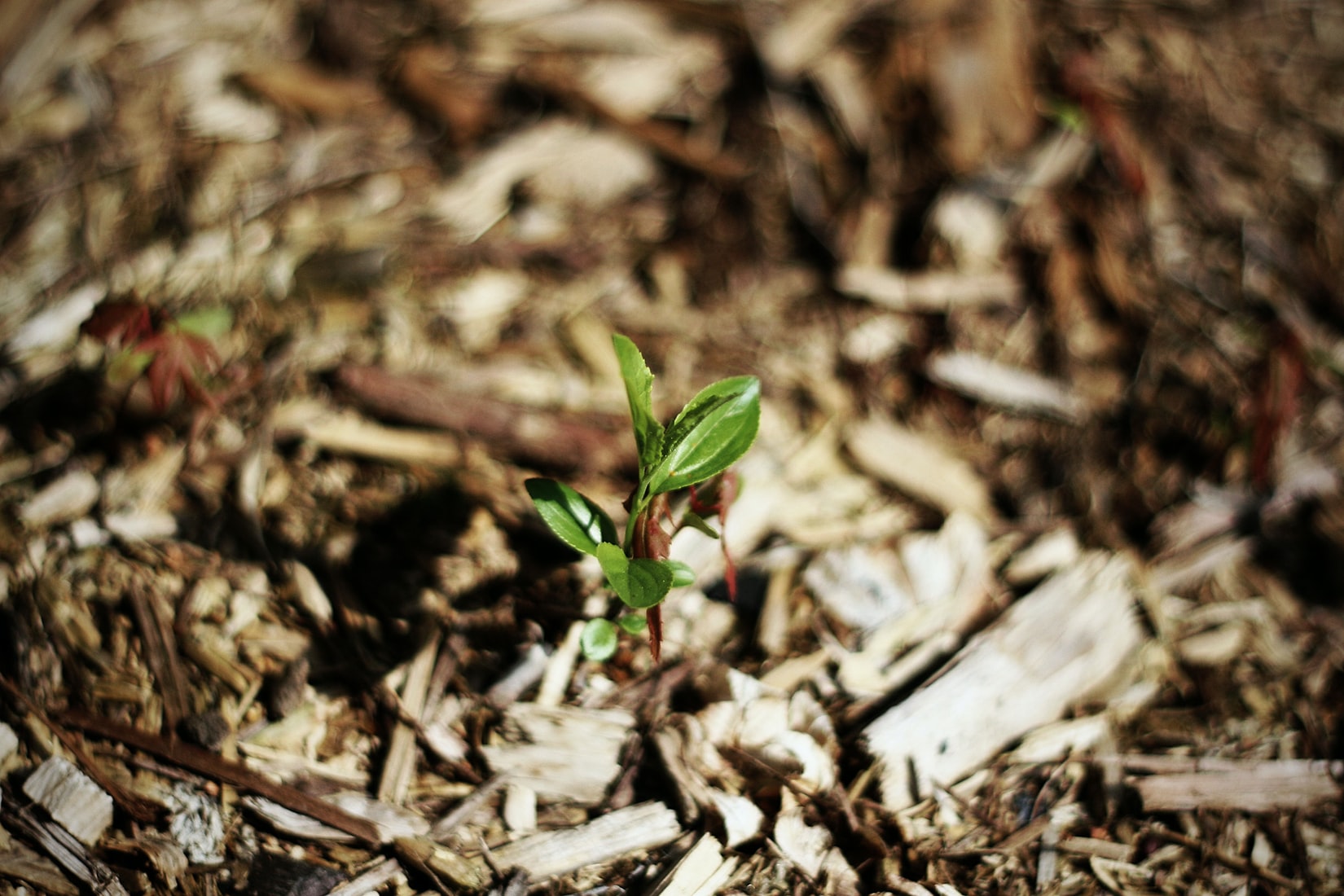Mulching Tips
You can use mulching jobs as an excuse to get outdoors for exercise when our Indiana weather starts to improve. Your yard will look better, and your landscape chores will be easier if you mulch correctly.
Mulching Tips
Decorative mulches add the finishing touch to any landscape by providing a consistent and colorful covering over the soil. Mulching materials are available in a wide variety of colors and textures to compliment your plants and surroundings. Mulches provide a protective covering over the soil. This helps to moderate seasonal temperature extremes and reduce water loss due to evaporation. Other benefits include less soil compaction and erosion, reduced weed growth and the addition of valuable organic matter back to the soil as the mulch breaks down. All of these help to create a better environment for roots to grow which leads to healthier, more vigorous, and beautiful plants in your landscape.

Wood Mulches:
Made from a variety of woods and available in different colors to match the landscaping décor. Dyed mulches will hold color longer. These mulches can be used around all types of woody plants, roses, and many perennials.
Wood mulch should be applied 2” to 4” deep around trees, shrubs, and evergreens; 1″ to 2” around most perennials and roses. For optimal benefits, maintain these mulches at the listed depths by periodically adding fresh mulch as needed. Soils that don’t drain well should not be mulched more than 2 inches deep.
As a rule, keep mulch 3-6” away from the plants. Mulching too deep or too close to trees and plants can allow disease and pests access.
- Roots need oxygen and moisture—thick mulch will not allow enough of either to reach the roots.
- Fungus and insects can enter decaying bark that has been buried under too-deep mulch.
- Insects will also select stressed trees for an attack—making the tree susceptible to other types of pest problems.
- Rodents like thick mulch and can girdle trees by gnawing on bark that is buried too deep in mulch.
- As mulch begins to decay the heat from the decay process can cause injury to plants.
No weed barrier is required when using organic mulches since it prevents the mulch from decomposing and replenishing the soil with organic matter. A 2″ to 3” layer of mulch will suppress most weed growth, while those few weeds which do sprout can be easy to pull out.
Once your mulch has been spread, soak it down with a gentle rain from your garden hose. This will help to cool, it down further, plus also act to settle the air pockets and lock the fibers together, giving it a nice smooth, finished look.
Organic mulches consume small amounts of nitrogen from the soil as they decompose. A light application of your favorite all-purpose fertilizer will help balance soil nutrients. (Broadcast over the mulched area during the growing season April through July).
Even dyed mulches will lose their color over time due to the ultraviolet rays of the sun, resulting in a grayish cast over the surface of the mulch. Fortunately, this can be remedied by lightly raking the area to bring up the fresh color from the underlying mulch. Color may also be refreshed by adding a thin layer of mulch over the surface; however be careful not to exceed the recommended depth.
Gravel Mulches:
Use stone mulch around most trees, shrubs, and evergreens, however, refrain from using around acid-loving varieties, roses and perennials.
We suggest using a porous type of weed barrier under all gravel mulch applications. This will help to keep the gravel from incorporating into the underlying soil and make it easier to remove if it becomes necessary. Do not use plastic or non-porous materials since they will restrict the movement of air and water throughout the soil. Follow the label directions of the weed barrier to allow for proper growing space around each plant. Occasional weeds may still grow as a result of seeds dropping on the surface and developing above the weed barrier.
Make the initial application of gravel 2” deep around plants. In areas where plants are not present, such as walkways, a 3-4” layer may be applied. Keep the material 3-6” away from the plants to prevent possible bark or stem damage from occurring.
Measuring for mulch
Figure the square footage of the area that you need to cover by using the hints provided on the mulch calculator page on our website, then use the mulch calculator to figure the amount of mulch that you will need. For irregularly shaped areas; break into smaller components to best approximate the total square footage.
How much does a yard/bag/cubic foot cover?
Mulches are available in bulk or bagged volumes. Bulk (loose) mulches are sold by the cubic yard while bagged mulches are available in 1, 2, or 3 cubic foot sizes and 50 pound bags, depending on the type you select.
1 cubic yard bulk covers
- 100 sq ft, 3″ deep
- 150 sq ft, 2″ deep
- 300 sq ft, 1″ deep
Bagged equivalents to 1 cubic yard:
- 9 bags–3 cubic foot bags
- 14 bags–2 cubic foot bags